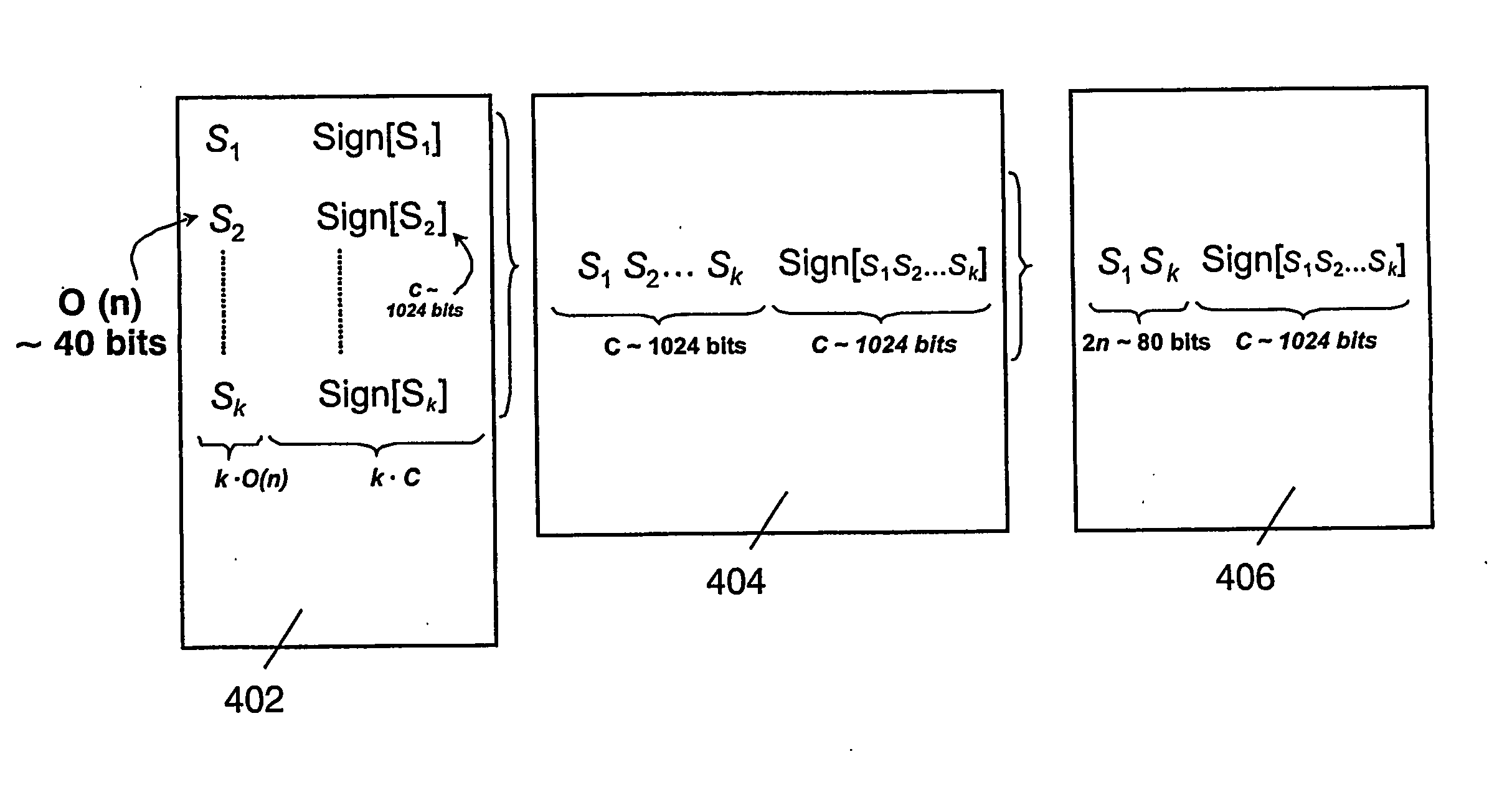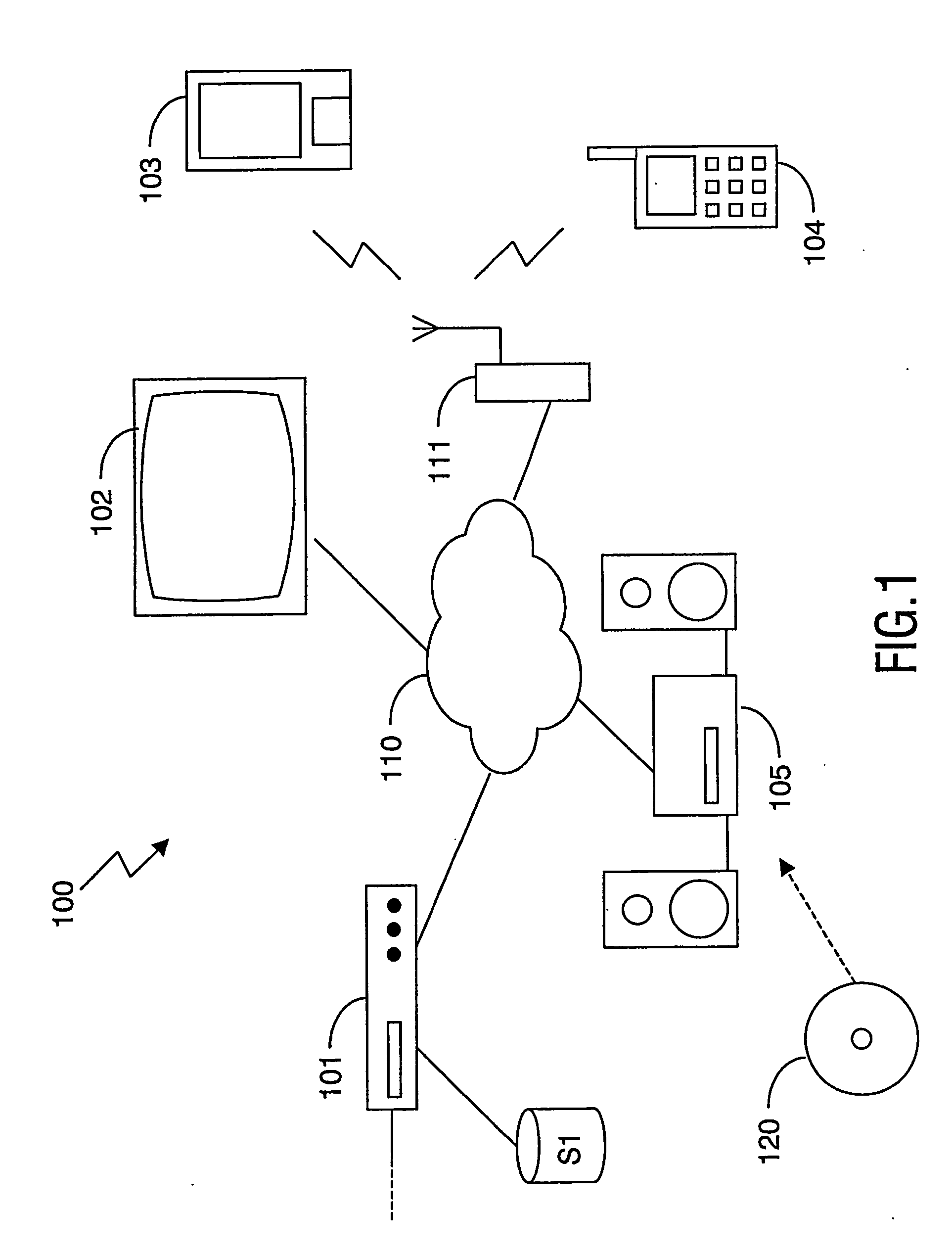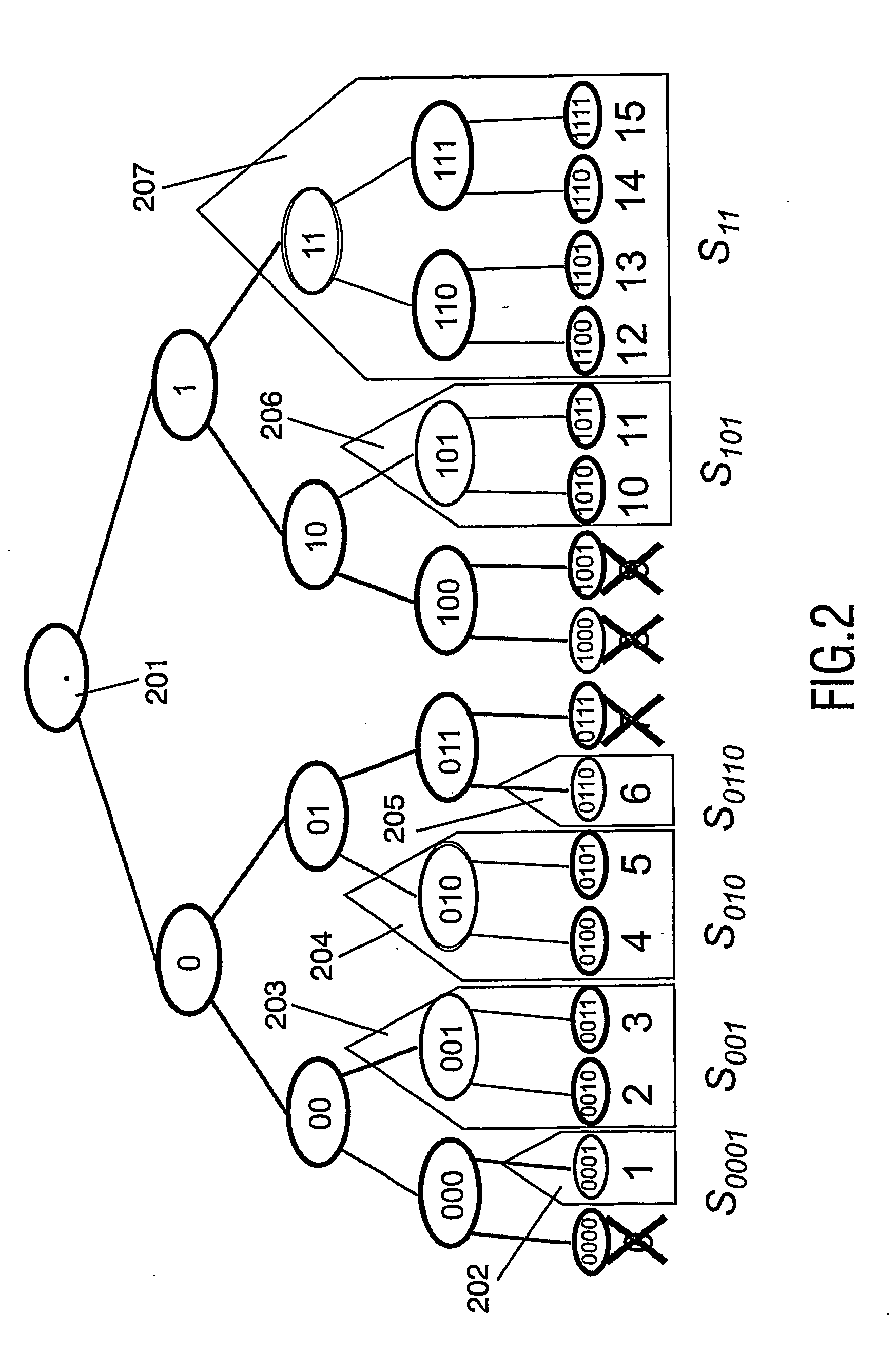System for authentication between devices using group certificates
a technology of group certificates and authentication systems, applied in the field of group certificates, can solve the problems of unrestricted growth, no longer consistent signatures, and users being unable to access content, and achieve the effect of great computational costs
- Summary
- Abstract
- Description
- Claims
- Application Information
AI Technical Summary
Benefits of technology
Problems solved by technology
Method used
Image
Examples
Embodiment Construction
[0037] Throughout the figures, same reference numerals indicate similar or corresponding features. Some of the features indicated in the drawings are typically implemented in software, and as such represent software entities, such as software modules or objects.
System Architecture
[0038]FIG. 1 schematically shows a system 100 comprising devices 101-105 interconnected via a network 110. In this embodiment, the system 100 is an in-home network. A typical digital home network includes a number of devices, e.g. a radio receiver, a tuner / decoder, a CD player, a pair of speakers, a television, a VCR, a tape deck, and so on. These devices are usually interconnected to allow one device, e.g. the television, to control another, e.g. the VCR. One device, such as e.g. the tuner / decoder or a set top box (STB), is usually the central device, providing central control over the others.
[0039] Content, which typically comprises things like music, songs, movies, TV programs, pictures and the likes...
PUM
 Login to View More
Login to View More Abstract
Description
Claims
Application Information
 Login to View More
Login to View More - R&D
- Intellectual Property
- Life Sciences
- Materials
- Tech Scout
- Unparalleled Data Quality
- Higher Quality Content
- 60% Fewer Hallucinations
Browse by: Latest US Patents, China's latest patents, Technical Efficacy Thesaurus, Application Domain, Technology Topic, Popular Technical Reports.
© 2025 PatSnap. All rights reserved.Legal|Privacy policy|Modern Slavery Act Transparency Statement|Sitemap|About US| Contact US: help@patsnap.com



